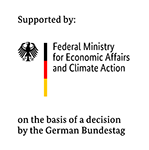Political options to transform the nitric acid sector
Amid the global trend towards industrial climate-friendly transformation, countries all over the world resort to various policy instruments to intensify and encourage emissions reduction.
NACAG advises partner governments on the choice of policy instruments best suited to ensure continued N2O abatement from nitric acid production, given the specific context of each country. Researchers and climate policy experts distinguish four major types of domestic policy instruments:
- Bilateral agreements between industry and the host government;
- Financial incentives, for example, direct financial subsidies or tax exemptions.
- Command-and-control instruments, in the form of mandatory N2O emissions limits;
- Carbon pricing instruments imposing a cost on each tonne of N2O emitted, such as a carbon tax or a cap & trade scheme;
Bilateral Agreements for emissions abatement are a promising fallback option, also to help bridge interim periods in countries where “hard” policies, such as emission limits or pricing schemes, are unlikely to be operative by 2024. Bilateral agreements are flexible instruments that can be structured to best meet the needs of the participating industry and government stakeholders.
Financial incentives (i.e. subsidies or tax relief) for continued N2O abatement should, if made available, be structured as results-based finance to ensure environmental effectiveness. This could be important to achieve industry buy-in in countries where the running cost of N2O abatement is perceived to place an undue burden on the industry’s profitability. Reduction or exemption of import taxes for the catalyst material can also provide financial relief to the plant operator and is worth considering.
The application of mandatory emission limits can, under certain circumstances, be suitable. The emissions of nitric acid plants vary widely depending on the technical details of the individual facilities. Thus, the limits essentially need to be defined plant by plant to ensure sufficient stringency and equal treatment of operators. Emission limits will not provide a dynamic incentive for abatement since the marginal emissions cost below the limit is zero. Consequently, emission limits can be an adequate instrument in countries with relatively small and homogeneous nitric acid industries. Mandatory emissions limits are internationally widely applied for other pollutants such as CO, SO2 or NOX. Potentially, an emissions limit for N2O could be added to this list, and the environmental license or permit of the facility could be bound to meet the set limit.
Cap & trade (or in other words, ETS) and carbon taxes are, potentially, the most efficient instruments for ensuring lasting N2O abatement in the nitric acid industry. They provide a dynamic incentive for producers to reduce their N2O emissions on an ongoing basis because every tonne emitted leads to either a direct cost (cash-out) or an opportunity cost in the form of emissions allowances consumed and thus not available for sale. Depending on their detailed design, these instruments will favour the internalization of the carbon price in the market for nitric acid and final products, thereby extending a signal of scarcity to the consumers. An emission trading system (ETS can deliver a guaranteed environmental outcome in terms of absolute greenhouse gas (GHG) emissions.
ETS and carbon taxes need to cover several industries to work efficiently and can have important distributional effects, making their implementation time-consuming. Consequently, the inclusion of nitric acid production makes sense where an ETS or a carbon tax is already in advanced stages of preparation for several industries and where that scheme is likely to include credible penalties and enforcement in case of non-compliance. In cases where such a scheme is not in place or in an advanced preparatory stage, it is not considered a viable short-term option.
NACAG´s history and market-based approaches
The Kyoto Protocol established three flexible mechanisms: Joint Implementation (JI), the Clean Development Mechanism (CDM) and International Emissions Trading (IET).
Under JI, there were 52 projects focusing on the abatement of nitrous oxide emissions from the production of nitric acid. Of these, 10 are located in non-EU countries. Since the beginning of its 3rd phase, which started in January 2013, the EU Emissions Trading System (EU ETS) has covered N2O emissions related to nitric acid production. As a result, the 42 former JI projects in EU countries are now covered under the EU ETS.
The EU ETS has been the major source of demand for certified emission reductions from the CDM. 55 projects were implemented within this instrument. Due to the financial crisis, economic stagnation, and political uncertainty, demand for CERs has fallen dramatically, resulting in plummeting international market prices. The average credit price in 2014 (US$ 0.17) was less than 1% of the value of the average credit price in 2008. Under these circumstances, N2O abatement projects under the CDM are economically unattractive as they offer no or very low return on investment. As a result, many project activities have been abandoned, and institutions, infrastructure and monitoring expertise are at serious risk of being lost.
The Nitric Acid Climate Action Group aims to revitalise abandoned N2O abatement projects as well as to kick-start abatement in plants that were not previously covered under the CDM.


